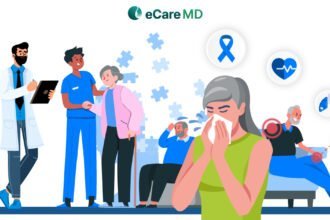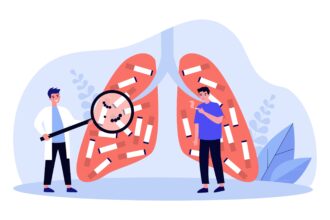Telehealth has emerged as a groundbreaking approach to providing healthcare services by leveraging digital tools and technology. Its growth has been fueled by the need to address challenges such as accessibility, cost, and efficiency in healthcare systems. By bridging geographical gaps and enabling real-time communication between patients and providers, telehealth has transformed the traditional model of care.
The COVID-19 pandemic further accelerated its adoption, as social distancing measures necessitated virtual consultations and remote monitoring. However, despite its potential to revolutionize healthcare, telehealth faces challenges such as the digital divide, privacy concerns, and regulatory complexities. With innovations like artificial intelligence, wearable technology, and hybrid care models, Riley Levy illustrates how telehealth is poised to become an integral part of modern healthcare.
Telehealth and Its Importance
Telehealth refers to the use of digital and communication technologies to deliver healthcare services remotely. It encompasses a variety of tools and platforms, such as virtual consultations, remote patient monitoring, mobile health applications, and electronic health records. This allows healthcare providers to connect with patients in real-time, bridging gaps caused by distance or limited access to in-person care. Unlike telemedicine, which focuses on clinical services, telehealth has a broader scope, including non-clinical aspects like education and administrative processes.
The importance of telehealth lies in its ability to improve healthcare accessibility and efficiency. In rural or remote areas, where medical resources are scarce, telehealth provides patients with timely care without the need for extensive travel. It also reduces costs by minimizing hospital visits and allowing remote monitoring for chronic conditions.
Changes in Telehealth
Telehealth’s origins trace back to the early 20th century when telecommunication tools like the telephone were first used to connect patients with healthcare providers. Over time, advancements in technology introduced new capabilities, such as video conferencing in the 1960s, which allowed specialists to consult with patients remotely. The rise of the internet in the 1990s further revolutionized telehealth, enabling the development of digital platforms that made remote care more accessible and integrated into broader systems.
More recently, innovations such as wearable devices and AI-powered tools have elevated telehealth to new heights. Sensors embedded in wearables can now monitor vital signs continuously, providing actionable data to healthcare providers. These technological leaps have allowed telehealth to transition from a supplementary service to an integral part of global healthcare.
Benefits of Telehealth
Telehealth has fundamentally reshaped how care is provided by breaking down geographical barriers and extending access. Remote consultations have made it possible for patients in rural or isolated areas to connect with specialists who may otherwise be out of reach. This is particularly impactful in addressing healthcare disparities, ensuring that care is no longer limited to urban centers or well-resourced regions.
In addition to improving access, telehealth offers a cost-effective alternative to traditional care. Patients can avoid travel expenses and time off work, while providers can reduce overhead costs associated with physical facilities. Chronic disease management has also been transformed through remote monitoring tools, which allow healthcare teams to track conditions like diabetes or hypertension in real-time.
The convenience of telehealth extends beyond cost savings and access. Patients can receive timely follow-ups or mental health support from the comfort of their homes, fostering a more patient-centered model of care. The integration of digital tools, such as mobile health apps and wearable trackers, further empowers individuals to take an active role in their health, creating a partnership between patients and providers that strengthens the overall care experience.
Notable Barriers
Despite its many advantages, telehealth faces several challenges that hinder its widespread adoption. One major obstacle is the digital divide, where lack of internet access or limited digital literacy in certain regions prevents individuals from utilizing telehealth services. This issue disproportionately affects rural areas and low-income populations, creating disparities in access to virtual care. Even with advancements in technology, the infrastructure to support seamless telehealth interactions is often lacking in these communities.
Privacy and data security remain major concerns as telehealth relies heavily on digital platforms to store and transmit sensitive patient information. Breaches can erode trust in the system, making patients and providers hesitant to embrace telehealth. Furthermore, regulatory and licensing complexities across jurisdictions create additional hurdles. Healthcare providers often need help offering services across state or national lines due to inconsistent policies, which limits the scalability of telehealth programs.
Another challenge lies in reimbursement policies that are only sometimes aligned with telehealth. Many healthcare systems and insurance providers have yet to fully integrate telehealth into their payment structures, creating financial disincentives for providers. Without clear guidelines and adequate funding, telehealth risks being underutilized despite its potential to transform healthcare.
Innovative Applications and Future Potential
The integration of artificial intelligence into telehealth platforms is unlocking new possibilities for personalized care. Through machine learning algorithms, healthcare providers can analyze vast amounts of patient data to predict health risks, recommend treatments, and even detect early signs of diseases. Wearable devices, such as fitness trackers and smartwatches, are further enhancing this potential by providing continuous monitoring of vital signs.
Hybrid healthcare models are emerging as a promising approach, blending the benefits of in-person consultations with virtual care. Patients can receive initial assessments remotely and follow up with in-clinic visits only when necessary, optimizing both convenience and quality of care. Programs tailored to specific needs, such as mental health support or chronic disease management, are also gaining traction. Virtual counseling sessions, for example, have expanded access to mental health services, reducing the stigma and logistical barriers that often keep individuals from seeking help.










